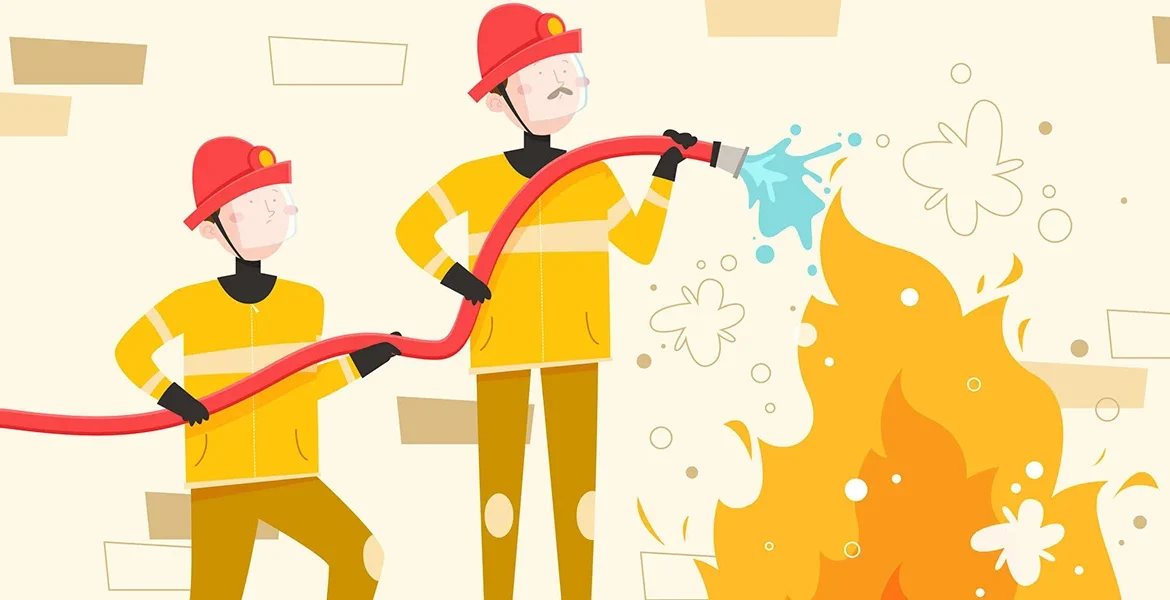Fire safety is a critical concern for any building, whether residential, commercial, or industrial. Ensuring that a property is safe from fire hazards involves a systematic approach called a Fire Risk Assessment. This process helps identify potential fire hazards, evaluate the risks, and implement measures to minimize them. Here’s a detailed look at the five stages of a Fire Risk Assessment.
Fire Risk Assesment Certificate
Ensure the safety of your premises with our comprehensive fire risk assessment service. Recommended annually and conducted by professional assessors, our assessments guarantee that essential fire safety measures and controls are in place. Schedule your assessment today.
Stage 1: Identify Fire Hazards
The first stage in a Fire Risk Assessment involves identifying potential fire hazards within the premises. This includes:
- Sources of Ignition: Items that could start a fire, such as electrical equipment, open flames, heaters, and smoking materials.
- Sources of Fuel: Materials that could burn, such as paper, wood, fabrics, and flammable liquids.
- Sources of Oxygen: Anything that could feed a fire, primarily the building’s ventilation system and natural airflow.
By thoroughly examining these potential hazards, you can better understand where a fire might start and what might fuel it.
Stage 2: Identify People at Risk
Once hazards have been identified, the next step is to determine who might be at risk in the event of a fire. This includes:
- Employees: All staff members, especially those working in high-risk areas.
- Visitors and Contractors: People who may not be familiar with the building’s layout or fire safety procedures.
- Vulnerable Individuals: Those with disabilities, the elderly, and anyone else who may require assistance in an emergency.
Understanding who is at risk helps tailor the fire safety measures to ensure everyone’s safety.
Stage 3: Evaluate, Remove, Reduce, and Protect from Risk
In this stage, you evaluate the identified risks and decide on measures to remove or reduce them. This includes:
- Removing Hazards: Where possible, eliminate the fire hazards. For example, replace faulty wiring or remove excess flammable materials.
- Reducing Risks: Implementing measures to reduce the likelihood of a fire starting. This might involve installing fire-resistant materials, using safer alternatives, or improving housekeeping practices.
- Protective Measures: Installing fire detection systems, fire alarms, and fire-fighting equipment. Ensuring fire doors are properly fitted and maintained can also help contain a fire.
Stage 4: Record, Plan, and Train
Recording your findings and planning for emergencies are crucial steps in managing fire risk. This involves:
- Documentation: Keeping a detailed record of the hazards identified, the people at risk, and the measures taken to mitigate these risks.
- Emergency Plan: Develop a comprehensive fire emergency plan that includes evacuation routes, assembly points, and procedures for alerting the fire services.
- Training: Ensuring all staff are trained on fire safety procedures, including how to use fire-fighting equipment, evacuation routes, and the emergency plan.
Stage 5: Review and Update Regularly
Fire Risk Assessments are not a one-time task. Regular reviews and updates are essential to ensure ongoing fire safety. This involves:
- Periodic Reviews: Regularly reviewing the Fire Risk Assessment to ensure it remains current and effective. This is especially important after any significant changes to the building or its use.
- Updating Procedures: Updating fire safety measures and emergency plans as needed to address any new risks or changes in regulations.
By following these five stages, you can systematically identify and manage fire risks, ensuring the safety of everyone in the building. Regularly reviewing and updating your Fire Risk Assessment will help maintain a safe environment and comply with legal requirements.
Fire safety is a shared responsibility. A thorough and well-executed Fire Risk Assessment is a proactive step towards protecting lives and property from the devastating effects of fire.




Leave a Reply
You must be logged in to post a comment.